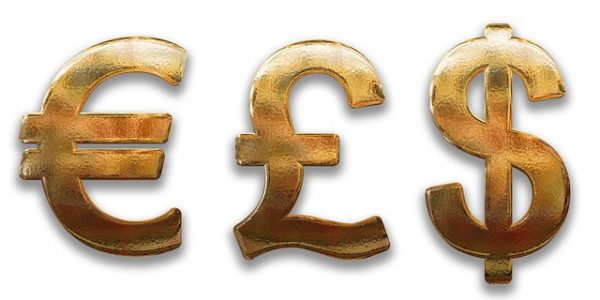Overview
The question on everyone’s lips when it comes to books is always: “How, in reality, can I get the results I’m looking for from my book?”
You’ve probably lost count of the number of times someone has said to you, “You could write a book about that”. It’s flattering, and you can probably name countless business role models who are authors without thinking too hard. You may have heard it said at networking events and masterminds, seen others flogging their book with ads online, been to a launch event or two. And their results all seem to be fantastic. They’re all very successful. Yet by virtue of you reading this I’m guessing you don’t feel the same about your book. And that’s if you’ve even written it yet. You may relate to one of these three positions:
- You haven’t started with your book because you are unsure of how to monetise it
- You have started with your book but are unsure of how to monetise it
- You have already published and you’re not happy with the commercial returns.
Now I don’t know what your specific goals are, what advice you’ve been given so far if any, and I don’t know what expectations you have from the whole project. I’m going to take an educated guess, however, that regardless of where you are in the production/publication process, you are here because you’re at least 90% sold on the idea of having a book. The remaining 10% is lack of visibility into how well, exactly, it can work for you. And it’s last 10% that makes being an author feel a bit like this:

The first part of shortening the road ahead is about having a rock solid book sales and marketing strategy. The other part is having a logical, commercially viable, transparent approach to the numbers. I’m not aware of anywhere else you can go to actually access the latter freely, and yet it’s a huge obstacle for so many. Well, I’m going to show you exactly how to work out the return on investment (ROI) on becoming an author in this article. So wonder no more!
The key to this article is to follow the steps one after the other. Scrolling straight to the numbers bit will still help you if you don’t currently have those insights. However, the way to maximise your time spent here and squeeze the most juice out of your book is to follow each of the steps in turn.
[bctt tweet=”To summarise, the 3 steps to guaranteeing ROI are: Setting Your Expectations, Establishing Your Commercial Requirements, Crunching The Numbers” username=”georgiakirke”]
I’ve also set easy-to-complete activities under each step. If you would rather treat this as a casual, educational read, go right ahead! For those of you who are after a more detailed planning exercise to actually map out your book project, follow the steps in order. You will be ready to start plotting out your marketing activities and milestones by the time we’re done.
ROI Step 1: Setting Your Expectations
Have you heard the stat flying around that the average non-fiction book apparently sells less than 250 copies in its first year and 3,000 over the course of its lifetime?

Is that a good or bad result? It sounds low, but then is it realistic to expect millions of copies sold unless you’re Gary V or Tim Ferris? What are the financial ins and outs of book production and promotion? Is ROI to be expected, or a nice-to-have? If the latter, why do people even become authors? What’s the benefit of a business book, if not financial?
The book return on investment questions are endless and I’m asked them all the time. The first stage of winning the ROI battle is setting your expectations in the first place. This can often feel like a chicken and egg scenario – if you knew what to expect you could set yourself some achievable and realistic goals, right?
While this is true on the one hand, it’s important to remember that there is no one-size-fits-all book marketing solution. So even if you were to have an overarching view of all things book sales and book marketing, you would still need to select the right strategies for you and your book.
Rather than set arbitrary book sales targets, it’s better to manage your own expectations throughout the process, especially when you’re learning as you go. First of all, be clear about your overall vision for becoming an author. Then you can figure out where to position your book within your wider business development strategy.
Exercise 1
- What is the overall purpose behind becoming an author? Write this out as clearly as you can.
- Why is it important that these expectations are realised, both to you and potential readers? Write this down, too.
- Think one year into the future. What has to have happened over that 12 months for you to know you’re on the right path? In other words, what are your one-year business goals? Write these down as well.
ROI Step 2: Establishing Your Commercial Requirements

There are plenty of reasons business authors don’t publish; time to write, ability, self-doubt, lack of awareness of available support are the usual suspects, although the list isn’t exhaustive. A big one is the uncertainty of what to do with their book once they’ve got it.
Remember though, book marketing is a huge field of expertise in its own right. Nobody is expecting you to do an hour’s online research and have the answers. It’s the same with book production. You’re looking to become an author, not a writer, so you can take the pressure off yourself writing-wise. Use a done-for-you service or hire an Editor. Use this article as your guide to ROI.
Positive Focus
Let’s leave the negative behind for a bit now though and focus on why business owners do become authors in the first place. More specifically, what you wanted to get out of becoming an author in the first place. Because it’s so easy to forget your original intention once the confusion sets in.
It is these positive reasons that, when more detail around the numbers is applied, become commercial objectives and will drive your book marketing decisions.
The 6 reasons that follow are broad examples of many business owners commercial requirements and the most common for deciding to become an author. You will probably recognise some if not all as your own. I’ve recapped underneath each one how they relate to a business book to help reignite your connection with your book as a commercial asset.
You may also have specific commercial objectives that fall outside of this list. Lead generation, for example, could fall under a few of the categories below but it could also be a stand-alone item on your one-year plan. That’s fine too. To summarise, some of the big reasons business owners decide to become authors are:
- Build your profile
- Brand awareness
- Shorten the sales cycle
- Increase deal size
- Impact
- Legacy
Exercise 2
- Read the list below
- List out each of your commercial goals for the next 12 months. You may find them on the list below or you may have your own
- For each one, write down why it’s important, then
- Quantify them all.
Build Your Profile

This is one of the most common drivers for business owners when it comes to authorship, for obvious reasons. When you publish your book on your area of expertise, you are literally putting your stamp on it. You’re essentially ring-fencing your intellectual niche. This is very powerful. The results of doing this are vast.
It is how you will get booked for speaking gigs, for example. Can you think of a speaker you’ve seen present recently? Did they also have a book? Speaking and authorship are two massive authority pieces so they go hand in hand. Your profile will also grow within your networks as you’re seen promoting your book and (if raising your profile is one of your goals), others are promoting it, too.
There are external sites on which you can promote your book, and you can add it to your email signature, your team’s signatures, and online bios. You can also send copies to your existing clients and their referrals. So you can see there are loads of strategies readily available to you to achieve that goal using your book. Rather than getting excited and jumping ahead to implementation at this early stage though, if raising your profile is one of your top priorities for the year ahead, simply note it down and say why it’s important.
Brand Awareness

Just as you can build people’s awareness of you, you can do the same for your brand. If you run a small entrepreneurial business and are looking to scale and/or exit, you may want to give your brand more of a visible position in the market. A lot of small business owners are the lifeblood of their organisation and have been the face and name of the business since day 1.
As you grow, you may step away from the day to day customer-facing activities to focus more on strategy. Your team will be handling business development more and more. In this instance, will you remain synonymous with the business’ identity, or will you build it one of its own? How will you communicate your vision for the business and its core values? How will you ensure your internal and external stakeholders know what your business is and where its going?
A book will achieve these goals. So if one of your one-year goals is to scale, exit, launch, or simply to have more of a presence in the market, you want to know this going in so that when it comes to doing the numbers, you’ll know how much this goal is worth to your business and therefore how much you’re prepared to invest.
Shorten The Sales Cycle

Services businesses, in particular, can have sales cycles that range from one phone call to several years. It’s great your business can be found online, but with that immediacy comes a lack of community and a need to spend time building trust. Buyers are inundated with emails, retargeting, pop-ups and ads in their feeds.
Everyone is trying to get their attention 24/7 so even if they can see the wood through the trees, how are they supposed to know who to work with? They need time to research and assess their options. A lot of service providers in similar fields say the same things. They probably all have a blog and maybe a newsletter. So a book not only helps you stand out, it also lets your prospective customers decide for themselves, in their own time and own their own terms, who you are, what you do and whether or not your values are aligned with theirs.
When they do then get in touch (and yes, they are more likely to be the ones to get in touch with you and not the other way around), you know they’re a warm lead who has self-qualified. The conversation that follows, as I’m sure you can imagine, is a much better quality conversation than your team chasing them with cold calls. The book takes care of a lot of the relationship building and empowers the prospect to make an informed buying decision in shorter timeframes.
This is why it also makes you more referrable and serves as a great referral gift itself. A referral is the best type of lead anyway. Imagine how your closing ratios might improve when you add your book to your referral process. Is shortening your sales cycle and/or increasing your number of referrals on your yearly planner? If so, what’s that worth to your business?
Increase Deal Size

People will pay more to work with an established, trusted expert. Not all people – not everyone’s in the market for quality service and expertise. Some will take the less good option and that’s fine for them. But in order to grow your business, you will want to create high-end services that require a larger investment, created specifically for the people who can and will pay when they can see that value in the solution.
Your book will allow those people to see and hear you above your competitors. Think about the type of people who read regularly – they tend to be people who:
- Are knowledgable and intelligent
- Value knowledge and intelligence
- Are active learners
- Have a higher emotional quotient (EQ)
- Invest in their own development.
These are likely the type of people you want to be doing business with, rather than those transactional buyers who do not possess the above qualities. If you’re already in front of those people, you may have set a goal to raise the number of those relationships or nurture the ones you already have even more. So increasing your deal size is not only about the money at the front end, but it’s also about:
- The quality of your service in your customers’ eyes
- The lifetime value of your customers
- The quality of yours and your team’s day to day interactions
- The quality and number of referrals
- New opportunities to collaborate and offer additional products/services.
Impact

A lot of talk about books revolves around the commercial gains as purely financial. In reality, many people wish to author books to impact other people. Let’s face it, only an entrepreneur would set themselves a goal of impacting 10,000,000 people over their lifetime! It’s a hefty goal.
It’s also going to be impossible if not very hard to achieve with blogs and social media ads. If you want to impact others on a local level, OK then that’s achievable in relatively short timeframes. If, however, you’re looking to make a lasting, global change for all of humanity, your strategy will need to involve collaborations and intelligent marketing that enables you to reach many people at once rather than working one-to-one.
So if your goal is impact and higher contribution, that is still a commercial output that can be measured. You might measure impact through social media impressions and click-throughs, the number of subscribers on your mailing list, email open rates and retention rates, the number of collaborations you create and audience size you access through those, the number of a certain type of actions undertaken.
Legacy

A common thing financial advisers say to me is that they want their clients to consider what else they might leave for their families once they’re gone, money aside. If you’re writing your book to form part of your legacy, it is still important to consider what the end product needs to look like, reach and do. Is it designed to teach life lessons to your children and grandchildren, or is it more about sharing your stories and anecdotes before you go? Could it appeal to the wider population? If it has historical elements, for example, it could do easily. Would you like it to be an asset that creates some ‘passive’ income for you and after you’re gone, your family?
Exercise 2
(Recap)
- List out each of your commercial goals for the next 12 months. You may find them on the list above or you may have your own
- For each one, write down why it’s important, then
- Quantify them all.
Quantifying goals can sometimes be challenging but it’s important. Without a number next to it, you have an aim rather than a goal. For a prompter, if raising brand awareness is on your agenda, how do you plan to measure it? How will you know when you’ve achieved heightened brand awareness? It could be the number of new leads generated, the number of new inbound enquiries, number of referrals, number of speaking gigs books or brand features.
Perhaps you have specific events you have your eye to speak at, or particular publications you’d like to be in. The same could be said for building your profile. If you’re looking to increase deal size, from what to what? How many new clients do you aim to work with at that new price point?
ROI Step 3: Crunching The Numbers

Once you’re clear on your vision for becoming an author and your specific 12-month commercial goals, you can get to grips with a budget for production and promotion and weigh up the available options.
At the start of this article, I mentioned a stat. The average book sells 250 copies in its first year and 3,000 over the course of its lifetime. I asked if that seemed good or bad and the answer was, “It depends on your goals”. Well, you now have those and I bet ‘book sales’ came fairly low down on that list, if at all. That’s because it’s a measure of a goal rather than a goal itself.
If you’re looking to achieve impact, then book sales could well be an important measurement. Otherwise, it’s really not the best focus. Authors make next to nothing from book sales.
Your typical traditional publisher takes around 80-90% of your profits, self-publishing platforms take up to 70%, and you have to pay tax on everything that’s left.
Let’s say you decide to sell your book for £9.99. Your publisher (whether self-publishing or traditional) will set a minimum retail price based on their costs for printing and distributing the book. They base this price mainly on the number of pages and whether the interior contains colour. Black and white interiors are significantly cheaper to produce so if you don’t need colour, I’d avoid it.
Let’s use a colour interior, 120 page book for this example to give you an on-the-worse-side-0f-average scenario. The prices all vary so all costs are approximations based on my experiences and insights at the time of writing.
Behind-The-Scenes Of Book Pricing
The minimum price set by your publisher for a 120-page book with a colour interior will likely be around £8-£9. This will include their calculated cost of printing plus a 60% royalty. They get paid first. You are then left with a profit of about £1. You then get between 35%-70% of that profit. That’s your royalty. The U.S. take a 30% tax withholding which, if you’re a UK citizen, you do not have to pay. They don’t tell you this when you complete the text form, of course. However, you will need to pay tax on any profits you make to the UK government when you do your tax returns. So you’re basically left with £0 from book sales!
The screenshot below is the pricing information on my own book, within my KDP account. My book is relatively small; 5×8, 62 pages, some colour around the chapter titles and a small handful of graphics in the interior. As you can see below, Amazon KDP has calculated the printing cost to them as £3.49.

They’ve set the minimum retail price at £5.82 so they’ve already taken their 60%. I can’t sell it for less than £5.82. My royalty is then calculated as 60% of the difference between their minimum retail price (£5.82) and what I choose to retail it at (it’s £7.99 at the moment).

60% of £2.17 is £1.30. So that’s the royalty I get from each sale of my book. I then pay tax on those earnings. So all things considered, the financial outlook for authors relying on book sales is rather grim.
Other Costs
And it doesn’t stop there. You then have to factor in your costs for producing a high-quality, well-written book that actually works for you and serves your readers, and likewise with the marketing campaign. While these can be done free of charge, I’d only recommend trying if your area of expertise is actually in these domains. Otherwise, keep your energy focussed on what you do and outsource these important tasks to someone who does it as their focus. You’ll get a far superior result and you won’t lose time, friends or your sanity in the process!
Production
This includes planning, writing, editing, coaching, proofreading and all design work. Design work includes covers, typesetting and formatting, and all images.

The support available to authors for production ranges from a bit of light editing help to absolutely everything done for you, including the writing. In order for the book to still be yours and sound like you, and reflect your tone of voice and beliefs, you should contribute the content no matter what. Nobody should create content on your behalf if you really want to generate significant ROI. The book has to be your own.
However, there’s no need for you to do the physical writing. How? Well, my authors speak the content during a guided discussion with me and I base that on the plan we do together. Alternatively you might write your book yourself and have an Editor and Designer do the rest. You can hire an Author Coach to get you through the writing phase and keep you accountable, or work through an online course.
Costs can obviously vary widely depending on the experience of the person you’re working with and the extent of the support. With book production, always make sure the service provider you work with is reputable and experienced, otherwise it’ll show in the content and then there’s no point in getting it done in the first place. Always ask for recommendations and examples. And when you’re working with someone great in their field, it’s not really a cost but an investment level. With book production, you get what you pay for.
Approximate production costs: £1,500 – £30,000.
Publication
Refers to self-publishing, independent publishing, vanity publishing and traditional publishing.

The two most important ingredients of a high-performing book are the quality of the book’s contents and the strength of the marketing campaign that surrounds it. The publishing method is simply a route to market.
Traditional publishers and vanity publishers often do not do the marketing and still require the author to be very proactive. They are in charge of the distribution and in some cases can add a level of authority and credibility the author’s name and the book. It’s common for vanity publishers to charge you anywhere between £30,000 – £70,000 and you still have to do the physical writing of the book and most if not all of the marketing.
They also place a lot of contractual restrictions on authors and copyright, and usually require you to already have a significant platform to leverage when promoting. Unless your target reader needs to see your book published traditionally in order to read it, or unless you want to have a book traditionally published for the sense of personal achievement, it doesn’t sense for most small business owners to go down that route.
Self-publishing on the other hand is free of charge, done totally online, still produces high-quality books in print, you keep the rights to your work and you can do what you like in terms of content, design and marketing. So for entrepreneurs, who are all invariably authoring their book for use in their marketing and therefore want to see a significant return, retaining that kind of control and flexibility makes far more commercial sense.
I would never recommend paying to have your book published – there’s literally no need. Keep your budget for production and promotion. The only outgoing here might be buying your ISBN number (rather than getting a free Amazon one so you can register your book with Nielson and supply it to bookshops etc) which is around £20.
Approximate publication costs: £0-£20.
Promotion/Marketing
Refers to any form of promotion or marketing to position you as an author or the book. It can be carried out by you yourself/your team, a marketing agency, a PR firm and specific book marketing firms.

While book marketing as a field and getting your specific strategy right can be a minefield, most entrepreneurs are familiar with the main modern marketing strategies:
- Digital marketing funnels
- Paid ads
- Social media
- Retargeting
- Events
- Media coverage
- Partnerships with complementary businesses
- Landing pages
- Building your email list
- SEO
- Blogging
These are just the tip of the iceberg when it comes to books, but if you are familiar with just two or three, you probably know that you can do an awful lot these days for free.
Content is king and that is not going to change; quite the opposite. So do invest in regular, SEO-optimised content to support your book. What you invest in promotion-wise though is obviously linked to your goals. If your ideal reader is local, you don’t need to invest in advertising that reaches Timbuktu. Events, posted copies with letters and partnering with neighbouring businesses may be more sensible.
If you’re aiming for a national presence, a landing page, the right metadata, getting supporting content in industry publications and the media along with speaking gigs, online ads or a well-planned launch event could be more appropriate.
If you are launching a business, build your online community, use social media, collect emails, use your book to launch an online course as well as to demonstrate expertise for your higher-value services. Regardless of your specific goals, there are general marketing principles that should always be adhered to on and within the book itself. There are literally hundreds more options, and the above are brief examples rather than prescriptions.
Approximate promotion costs: £0-£10,000 (as an average starting point. Once you’re seeing ROI you can increase your spend).
The point is, your return on investment is going to come from how you leverage the quality content in your book, not how you publish.
Working Out Your Budget

So how do you decide how much to spend? Well, looking back at your commercial requirements, how many –
- Leads
- New clients
- Speaking gigs
- Joint ventures
- High-value packages
- Referrals
- Website hits
- Media mentions
- Followers
– do you plan on getting/doing/achieving? And what are they worth to you? Then invest accordingly. If your goal is to make another £30,000, £50,000, £150,000+, then clearly, investing signficantly to get it right and done in good time (before your content evolves too much and your market moves on) is totally worth it. If your plan is to add another 1,000 people to your mailing list, why and what’s that worth to your business? Invest in your book appropriately.
If you want to increase your profile, as long as you are clear on how you’ll measure your success, you can plan your speaking gigs/content/press in advance and you’ll also therefore know the quality of the book you need to put out there. So now, you can budget for it. And that is why it’s an investment, not a cost. It’s money that you are putting to work for you and because a book is the only permanent marketing tool, it will always work for you.
Exercise 3
- Note down the likely support you’ll need for the production, publication and promotion of your book.
- Set an initial budget that you can keep in mind when speaking with service providers.
Summary
ROI Step 1: Setting Your Expectations
Exercise
- What is the overall purpose behind becoming an author? Write this out as clearly as you can.
- Why is it important that these expectations are realised, both to you and potential readers? Write this down, too.
- Think one year into the future. What has to have happened over that 12 months for you to know you’re on the right path? In other words, what are your one-year business goals? Write these down as well.
ROI Step 2: Establishing Your Commercial Requirements
Exercise
- List out each of your commercial goals for the next 12 months. You may find them on the list above or you may have your own
- For each one, write down why it’s important, then
- Quantify them all.
ROI Step 3: Crunching The Numbers
Exercise
- Note down the likely support you’ll need for the production, publication and promotion of your book.
- Next to your commercial requirements, write down an initial budget for that support that you can keep in mind when researching your strategy and speaking with service providers.
So now you know how to work your book out as a business investment rather than a nice-to-have, the missing piece of the puzzle is your strategy. The exact promotional activities you need to undertake to make sure your investment pays off. And that, dear Reader, is for another article.
Stay tuned and send in your details for a FREE copy of my ebook, The 80 Most Popular Book Marketing Tools, Strategies & Resources!
In The Meantime…

The Entrepreneur’s Guide to Book Marketing Success is available to buy through the WBR website and on Amazon and Kindle. It unpacks business book marketing before, during and after publishing, and includes the 80 of the most popular book marketing strategies AND the 7-step planning tool I use with all WBR authors.
For more information on the done-for-you content support available, click here to contact us securely or email info@writebusinessresults.com.
[/fusion_text][/fusion_builder_column][/fusion_builder_row][/fusion_builder_container]